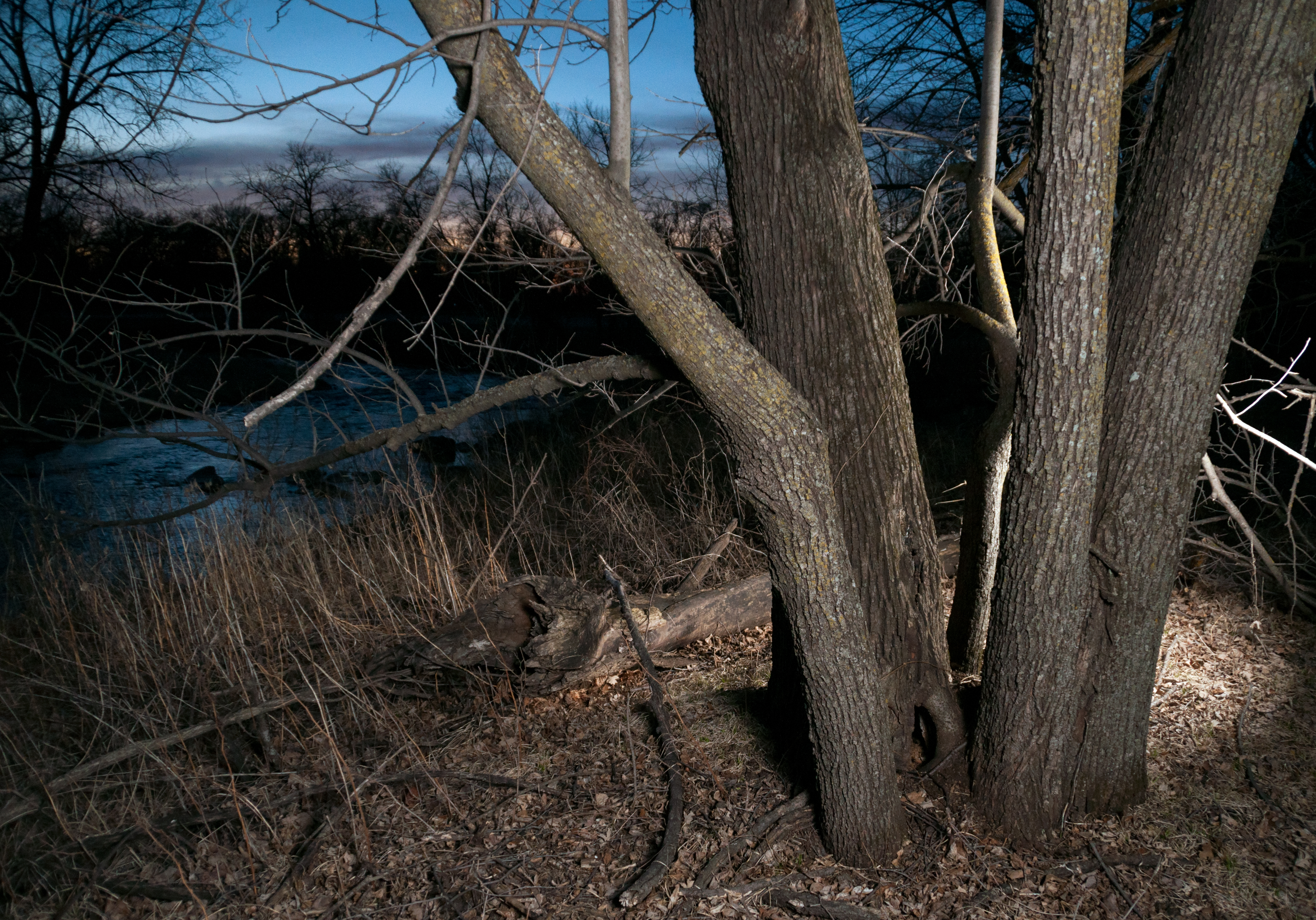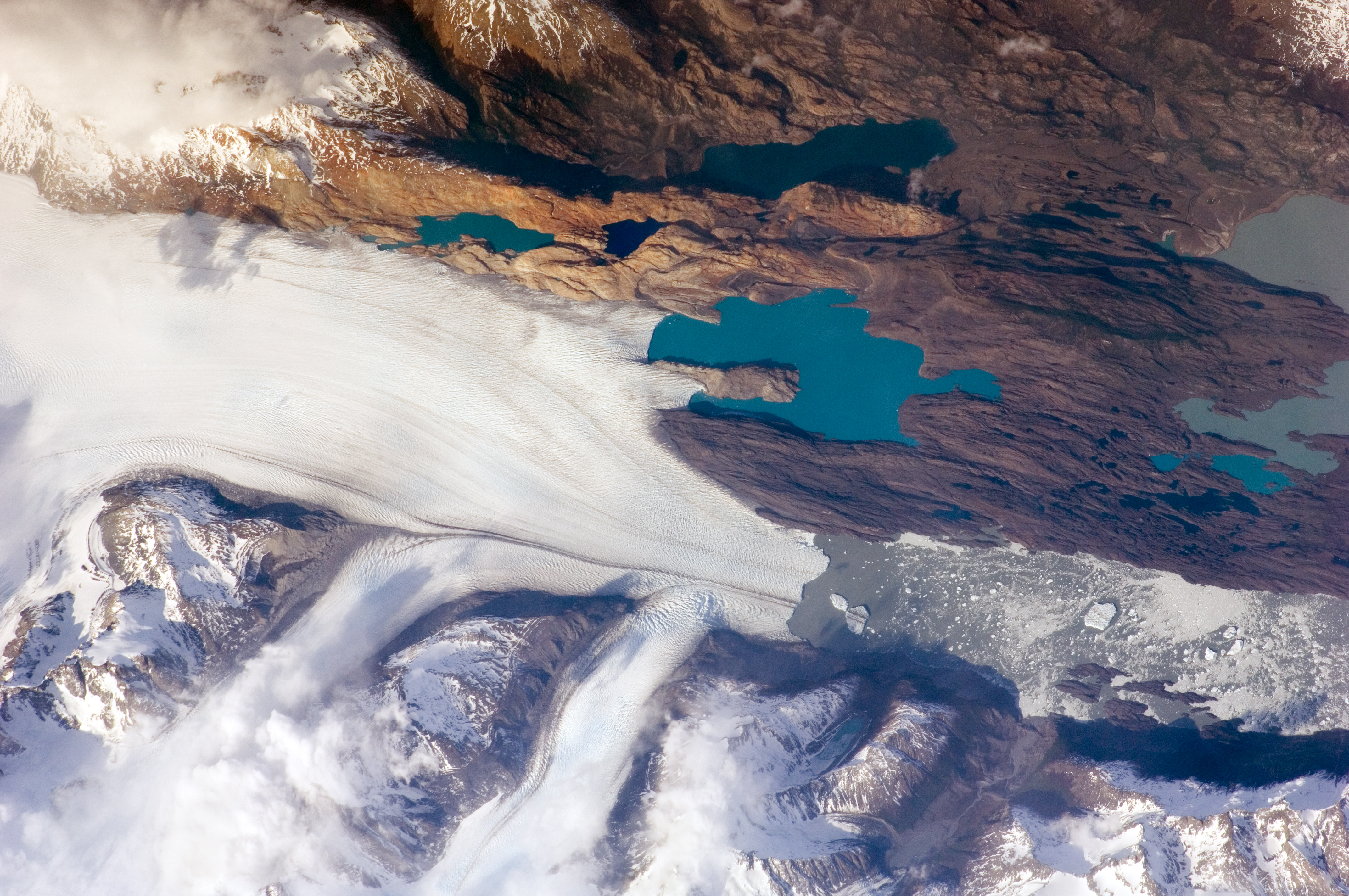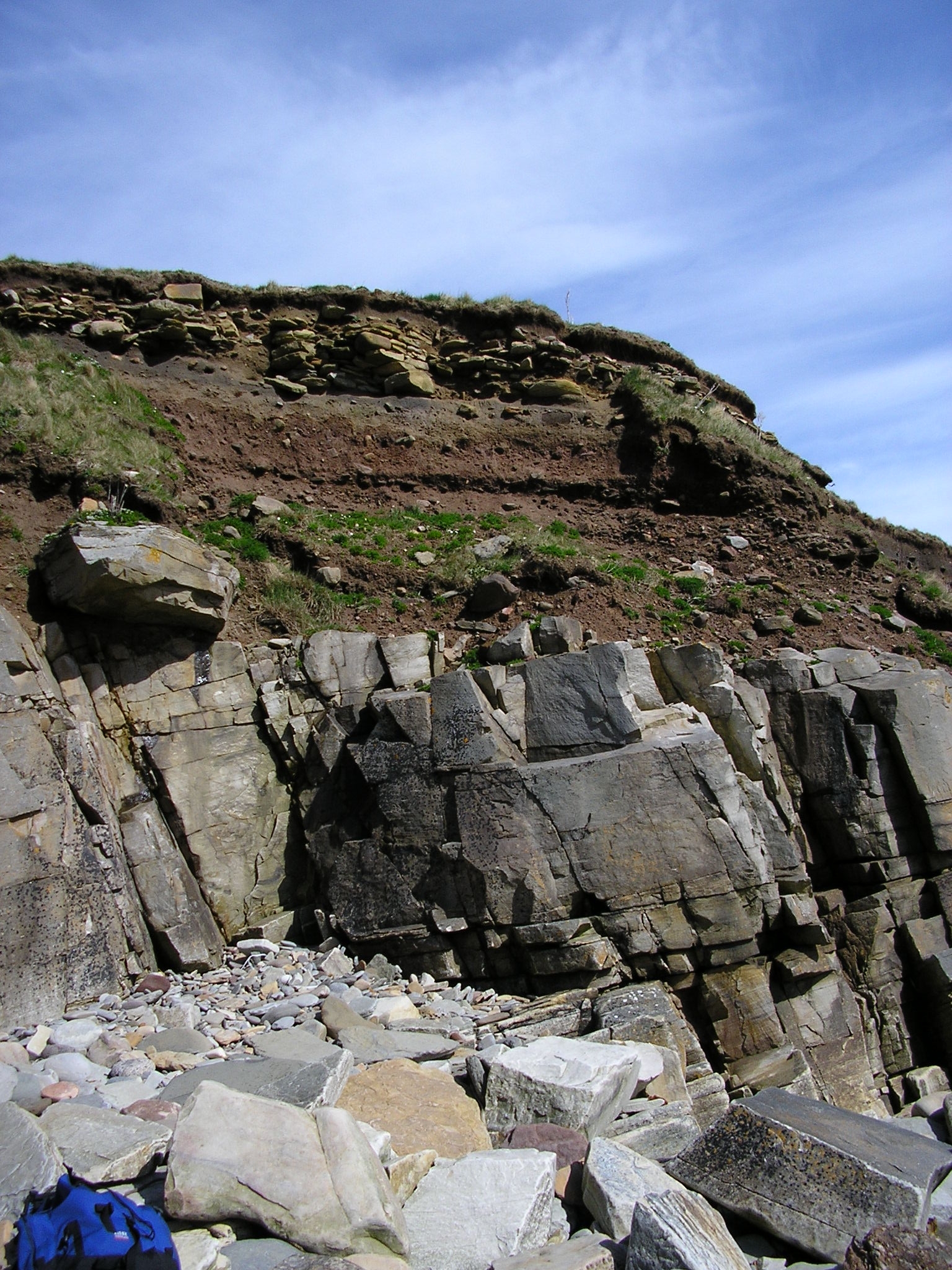|
Buffalo River State Park (Minnesota)
Buffalo River State Park is a state park of Minnesota, United States, conserving a prairie bisected by the wooded banks of the Buffalo River. Together with the adjacent Bluestem Prairie Scientific and Natural Area co-owned by The Nature Conservancy and Minnesota's Department of Natural Resources, it protects one of the largest and highest-quality prairie remnants in Minnesota. It used to offer a man-made swimming pond close to the Fargo–Moorhead metropolitan area, however, that has not been open since 2018. Presently, it is most popular for its high quality educational programming, swimming in the Buffalo River, and picnicking. The park is located just off U.S. Route 10 in Clay County, east of Glyndon and east of Moorhead. Buffalo River State Park was established in 1937 and developed by the Works Progress Administration. Three buildings and three structures built in the National Park Service rustic style were added to the National Register of Historic Places in 1989. ... [...More Info...] [...Related Items...] OR: [Wikipedia] [Google] [Baidu] |
Prairie
Prairies are ecosystems considered part of the temperate grasslands, savannas, and shrublands biome by ecologists, based on similar temperate climates, moderate rainfall, and a composition of grasses, herbs, and shrubs, rather than trees, as the dominant vegetation type. Temperate grassland regions include the Pampas of Argentina, Brazil and Uruguay, and the steppe of Ukraine, Russia and Kazakhstan. Lands typically referred to as "prairie" tend to be in North America. The term encompasses the area referred to as the Interior Lowlands of Canada, the United States, and Mexico, which includes all of the Great Plains as well as the wetter, hillier land to the east. In the U.S., the area is constituted by most or all of the states of North Dakota, South Dakota, Nebraska, Kansas, and Oklahoma, and sizable parts of the states of Montana, Wyoming, Colorado, New Mexico, Texas, Missouri, Iowa, Illinois, Indiana, Wisconsin, and western and southern Minnesota. The Palouse of Washington and ... [...More Info...] [...Related Items...] OR: [Wikipedia] [Google] [Baidu] |
Proglacial Lake
In geology, a proglacial lake is a lake formed either by the damming action of a moraine during the retreat of a melting glacier, a glacial ice dam, or by meltwater trapped against an ice sheet due to isostatic depression of the crust around the ice. At the end of the last ice age about 10,000 years ago, large proglacial lakes were a widespread feature in the northern hemisphere. Moraine-dammed The receding glaciers of the tropical Andes have formed a number of proglacial lakes, especially in the Cordillera Blanca of Peru, where 70% of all tropical glaciers are. Several such lakes have formed rapidly during the 20th century. These lakes may burst, creating a hazard for zones below. Many natural dams (usually moraines) containing the lake water have been reinforced with safety dams. Some 34 such dams have been built in the Cordillera Blanca to contain proglacial lakes. Several proglacial lakes have also formed in recent decades at the end of glaciers on the eastern side of ... [...More Info...] [...Related Items...] OR: [Wikipedia] [Google] [Baidu] |
Northern Tall Grasslands
The Northern tall grasslands is one of 867 terrestrial ecoregions defined by the World Wide Fund for Nature. This ecoregion largely follows the Red River Valley in the Canadian province of Manitoba and the American states of North Dakota and Minnesota. Climate The Northern tall grasslands have a humid continental climate with moderate precipitation, usually between 450-700mm. Winters here are very cold, with a mean winter temperature of , and summers are warm, with a mean temperature of . The ecoregion's mean annual temperature is . Flora Dominant grasses include big bluestem (''Andropogon gerardi''), switchgrass (''Panicum virgatum'') and Indiangrass ('' Sorghastrum nutans''). In wetter areas, trembling aspen (''Populus tremuloides'') and bur oak ('' Quercus macrocarpa'') can be found. Fauna Like other North American prairie ecoregions, the Northern tall grasslands once supported large herds of bison (''Bison bison'') and elk (''Cervus canadensis''), which were hunted by the ... [...More Info...] [...Related Items...] OR: [Wikipedia] [Google] [Baidu] |
Glacial Erratic
A glacial erratic is glacially deposited rock differing from the type of rock native to the area in which it rests. Erratics, which take their name from the Latin word ' ("to wander"), are carried by glacial ice, often over distances of hundreds of kilometres. Erratics can range in size from pebbles to large boulders such as Big Rock () in Alberta. Geologists identify erratics by studying the rocks surrounding the position of the erratic and the composition of the erratic itself. Erratics are significant because: *They can be transported by glaciers, and they are thereby one of a series of indicators which mark the path of prehistoric glacier movement. Their lithographic origin can be traced to the parent bedrock, allowing for confirmation of the ice flow route. *They can be transported by ice rafting. This allows quantification of the extent of glacial flooding resulting from ice dam failure which release the waters stored in proglacial lakes such as Lake Missoula. Err ... [...More Info...] [...Related Items...] OR: [Wikipedia] [Google] [Baidu] |
Cut Bank
A cut bank, also known as a river cliff or river-cut cliff, is the outside bank of a curve or meander in a water channel ( stream), which is continually undergoing erosion.Essentials of Geology, 3rd Ed, Stephen Marshak Cut banks are found in abundance along mature or meandering streams, they are located on the ''outside'' of a stream bend, known as a meander, opposite the slip-off slope on the inside of the bend. They are shaped much like a small cliff, and are formed by the erosion of soil as the stream collides with the river bank. As opposed to a point bar, which is an area of deposition, a cut bank is an area of erosion. Typically, cut banks are steep and may be nearly vertical. Often, particularly during periods of high rainfall and higher-than average water levels, trees and poorly placed buildings can fall into the stream due to mass wasting events. Given enough time, the combination of erosion along cut banks and deposition along point bars can lead to the formation of ... [...More Info...] [...Related Items...] OR: [Wikipedia] [Google] [Baidu] |
Schist
Schist ( ) is a medium-grained metamorphic rock showing pronounced schistosity. This means that the rock is composed of mineral grains easily seen with a low-power hand lens, oriented in such a way that the rock is easily split into thin flakes or plates. This texture reflects a high content of platy minerals, such as micas, talc, chlorite, or graphite. These are often interleaved with more granular minerals, such as feldspar or quartz. Schist typically forms during regional metamorphism accompanying the process of mountain building (orogeny) and usually reflects a medium grade of metamorphism. Schist can form from many different kinds of rocks, including sedimentary rocks such as mudstones and igneous rocks such as tuffs. Schist metamorphosed from mudstone is particularly common and is often very rich in mica (a ''mica schist''). Where the type of the original rock (the protolith) is discernible, the schist is usually given a name reflecting its protolith, such as ''schis ... [...More Info...] [...Related Items...] OR: [Wikipedia] [Google] [Baidu] |
Slate
Slate is a fine-grained, foliated, homogeneous metamorphic rock derived from an original shale-type sedimentary rock composed of clay or volcanic ash through low-grade regional metamorphism. It is the finest grained foliated metamorphic rock. Foliation may not correspond to the original sedimentary layering, but instead is in planes perpendicular to the direction of metamorphic compression. The foliation in slate is called " slaty cleavage". It is caused by strong compression causing fine grained clay flakes to regrow in planes perpendicular to the compression. When expertly "cut" by striking parallel to the foliation, with a specialized tool in the quarry, many slates will display a property called fissility, forming smooth flat sheets of stone which have long been used for roofing, floor tiles, and other purposes. Slate is frequently grey in color, especially when seen, en masse, covering roofs. However, slate occurs in a variety of colors even from a single locality; f ... [...More Info...] [...Related Items...] OR: [Wikipedia] [Google] [Baidu] |
Granite
Granite () is a coarse-grained ( phaneritic) intrusive igneous rock composed mostly of quartz, alkali feldspar, and plagioclase. It forms from magma with a high content of silica and alkali metal oxides that slowly cools and solidifies underground. It is common in the continental crust of Earth, where it is found in igneous intrusions. These range in size from dikes only a few centimeters across to batholiths exposed over hundreds of square kilometers. Granite is typical of a larger family of ''granitic rocks'', or '' granitoids'', that are composed mostly of coarse-grained quartz and feldspars in varying proportions. These rocks are classified by the relative percentages of quartz, alkali feldspar, and plagioclase (the QAPF classification), with true granite representing granitic rocks rich in quartz and alkali feldspar. Most granitic rocks also contain mica or amphibole minerals, though a few (known as leucogranites) contain almost no dark minerals. Granite is ... [...More Info...] [...Related Items...] OR: [Wikipedia] [Google] [Baidu] |
Shale
Shale is a fine-grained, clastic sedimentary rock formed from mud that is a mix of flakes of clay minerals (hydrous aluminium phyllosilicates, e.g. kaolin, Al2 Si2 O5( OH)4) and tiny fragments (silt-sized particles) of other minerals, especially quartz and calcite.Blatt, Harvey and Robert J. Tracy (1996) ''Petrology: Igneous, Sedimentary and Metamorphic'', 2nd ed., Freeman, pp. 281–292 Shale is characterized by its tendency to split into thin layers ( laminae) less than one centimeter in thickness. This property is called '' fissility''. Shale is the most common sedimentary rock. The term ''shale'' is sometimes applied more broadly, as essentially a synonym for mudrock, rather than in the more narrow sense of clay-rich fissile mudrock. Texture Shale typically exhibits varying degrees of fissility. Because of the parallel orientation of clay mineral flakes in shale, it breaks into thin layers, often splintery and usually parallel to the otherwise indistinguishable bed ... [...More Info...] [...Related Items...] OR: [Wikipedia] [Google] [Baidu] |
Bedrock
In geology, bedrock is solid rock that lies under loose material ( regolith) within the crust of Earth or another terrestrial planet. Definition Bedrock is the solid rock that underlies looser surface material. An exposed portion of bedrock is often called an outcrop. The various kinds of broken and weathered rock material, such as soil and subsoil, that may overlie the bedrock are known as regolith. Engineering geology The surface of the bedrock beneath the soil cover (regolith) is also known as ''rockhead'' in engineering geology, and its identification by digging, drilling or geophysical methods is an important task in most civil engineering projects. Superficial deposits can be very thick, such that the bedrock lies hundreds of meters below the surface. Weathering of bedrock Exposed bedrock experiences weathering, which may be physical or chemical, and which alters the structure of the rock to leave it susceptible to erosion. Bedrock may also experience ... [...More Info...] [...Related Items...] OR: [Wikipedia] [Google] [Baidu] |
Beach Ridge
A beach ridge is a wave-swept or wave-deposited ridge running parallel to a shoreline. It is commonly composed of sand as well as sediment worked from underlying beach material. The movement of sediment by wave action is called '' littoral transport''. Movement of material parallel to the shoreline is called '' longshore transport''. Movement perpendicular to the shore is called ''on-offshore transport''. A beach ridge may be capped by, or associated with, sand dunes. The height of a beach ridge is affected by wave size and energy. A fall in water level (or an uplift of land) can isolate a beach ridge from the body of water that created it. Isolated beach ridges may be found along dry lakes in the western United States and inland of the Great Lakes of North America, where they formed at the end of the last ice age when lake levels were much higher due to glacial melting and obstructed outflow caused by glacial ice. Some isolated beach ridges are found in parts of Scan ... [...More Info...] [...Related Items...] OR: [Wikipedia] [Google] [Baidu] |
Glacial Lake Agassiz
Lake Agassiz was a large glacial lake in central North America. Fed by glacial meltwater at the end of the last glacial period, its area was larger than all of the modern Great Lakes combined. First postulated in 1823 by William H. Keating, it was named by Warren Upham in 1879 after Louis Agassiz, when Upham recognized that the lake was formed by glacial action. Geological progression During the last ice age, northern North America was covered by an ice sheet, which alternately advanced and retreated with variations in the climate. This continental ice sheet formed during the period now known as the Wisconsin glaciation, and covered much of central North America between 30,000 and 10,000 years ago. As the ice sheet disintegrated, its meltwaters created an immense proglacial lake. Around 13,000 years ago, this lake came to cover much of what are now southeastern Manitoba, northwestern Ontario, northern Minnesota, eastern North Dakota, and Saskatchewan. At its greatest exte ... [...More Info...] [...Related Items...] OR: [Wikipedia] [Google] [Baidu] |







